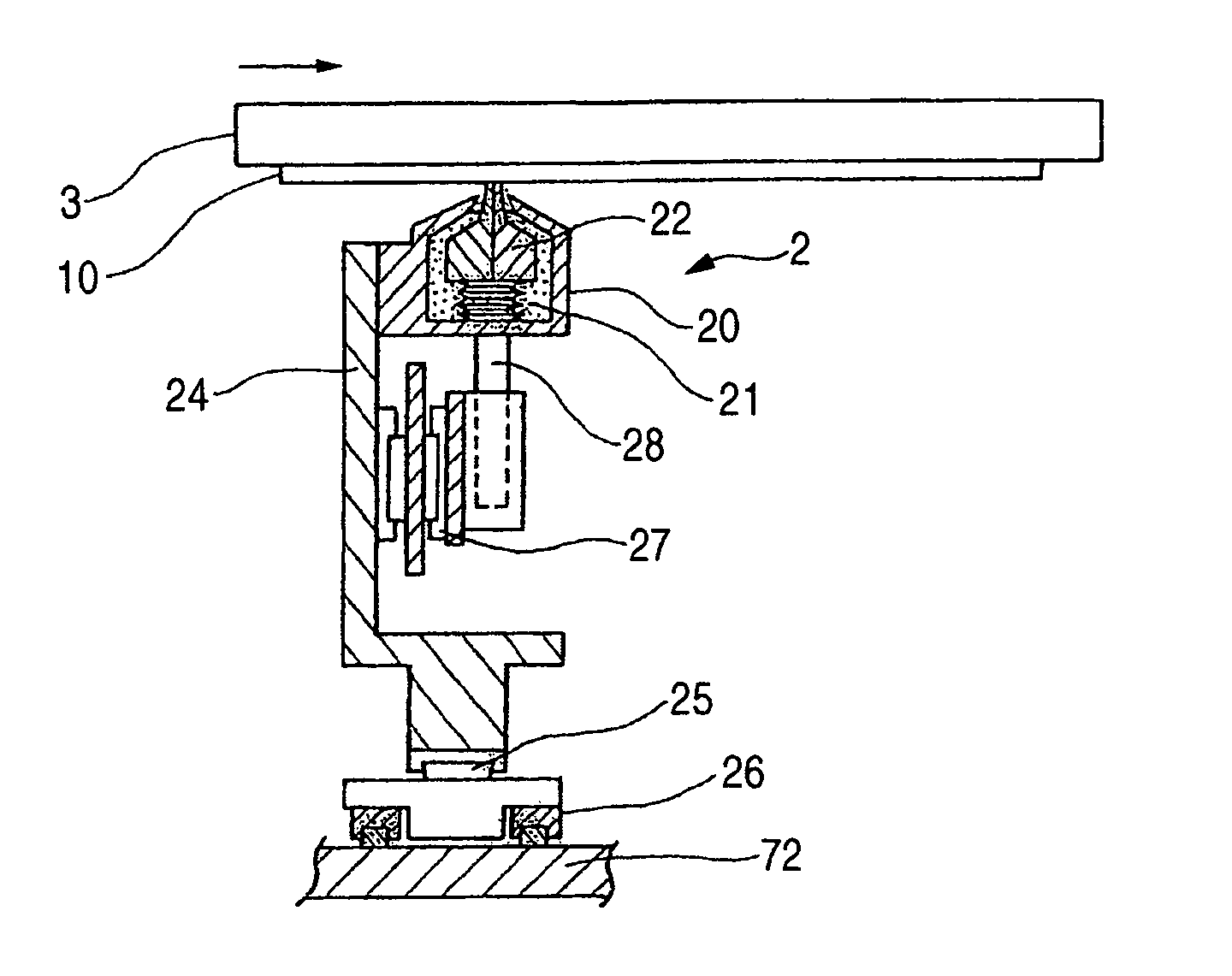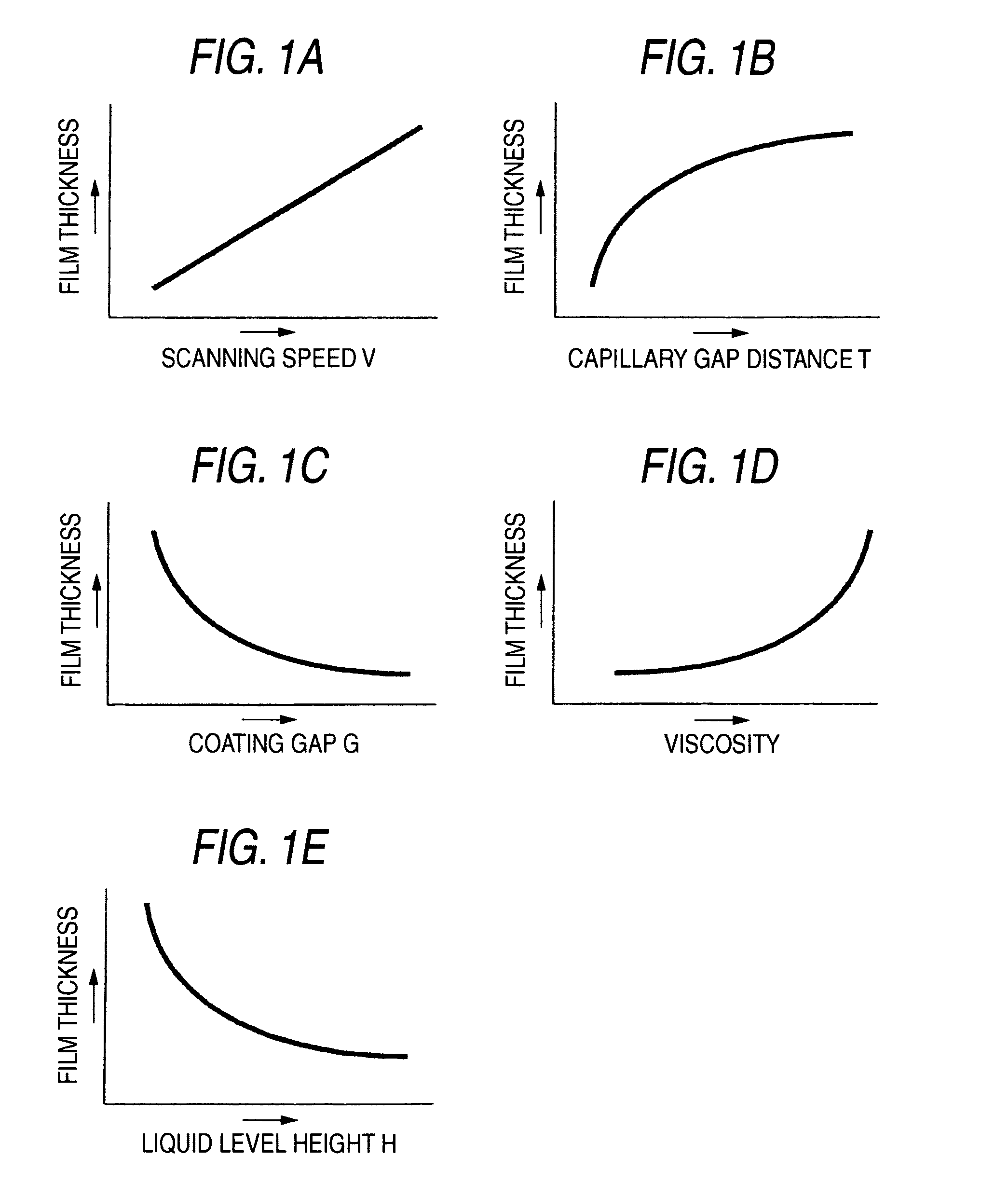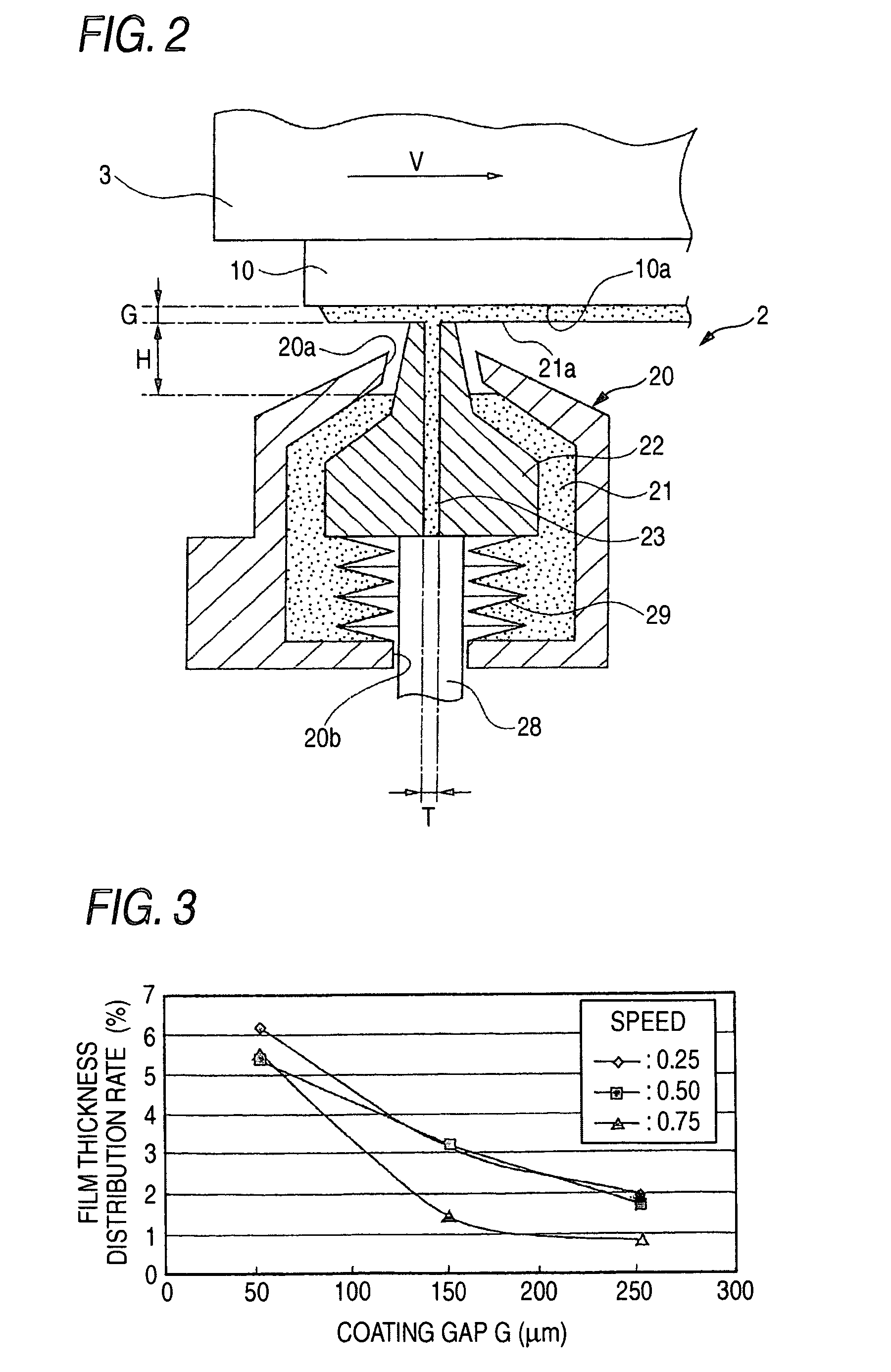Method of manufacturing substrate having resist film
a technology of resist film and substrate, which is applied in the direction of manufacturing tools, superimposed coating process, liquid/solution decomposition chemical coating, etc., can solve the problem that the resist agent that once contacted the surface to be coated becomes liable to be separated therefrom, and achieves the effect of enhancing the uniform thickness of the resist film
- Summary
- Abstract
- Description
- Claims
- Application Information
AI Technical Summary
Benefits of technology
Problems solved by technology
Method used
Image
Examples
Embodiment Construction
[0048]Hereinafter, an embodiment of the invention is described by referring to the accompanying drawings.
[0049]FIG. 2 is a cross-sectional view illustrating a state in which a coating operation is performed by a coating unit of a coating apparatus performing the method of manufacturing a substrate having a resist film according to the invention.
[0050]The method of manufacturing a substrate having a resist film according to the invention comprises the step of lifting liquid resist agent 21 stored in a liquid tank 20 by utilizing a capillary phenomenon caused in a slit-like capillary gap 23 of a coating nozzle 22, the step of downwardly directing a surface 10a of a substrate 10, which is to be coated, and causing this surface to move closer to the top portion of the coating nozzle 22, and the step of performing relative scan between the coating nozzle 22 and the surface 10a while causing the resist agent 21 raised by the coating nozzle 22 to wet the surface 10a through the top portion...
PUM
| Property | Measurement | Unit |
|---|---|---|
| length | aaaaa | aaaaa |
| thickness distribution rate | aaaaa | aaaaa |
| thickness distribution rate | aaaaa | aaaaa |
Abstract
Description
Claims
Application Information
 Login to View More
Login to View More - R&D
- Intellectual Property
- Life Sciences
- Materials
- Tech Scout
- Unparalleled Data Quality
- Higher Quality Content
- 60% Fewer Hallucinations
Browse by: Latest US Patents, China's latest patents, Technical Efficacy Thesaurus, Application Domain, Technology Topic, Popular Technical Reports.
© 2025 PatSnap. All rights reserved.Legal|Privacy policy|Modern Slavery Act Transparency Statement|Sitemap|About US| Contact US: help@patsnap.com



